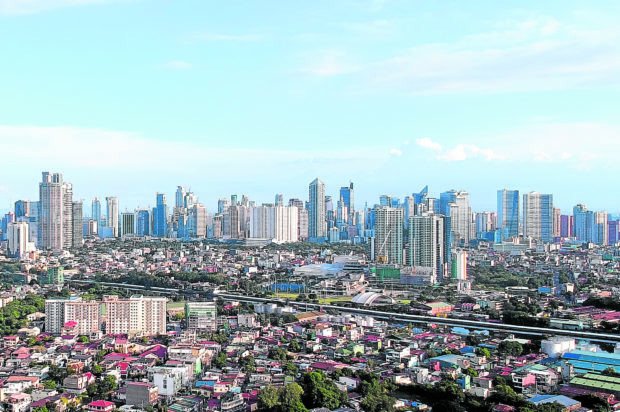
Negative externalities such as air pollution, vehicular traffic, crime and conflicts should be collectively addressed instead of walled off by perimeter walls and guarded gates.—GRIG C. MONTEGRANDE
Residential real estate purchases are among the more thought-out decisions, whether it’s for own use or for investment.
How does one rationalize the process of selecting from property packages available in the market? Many factors come to play and these include basic considerations such as daily routines, size of family and income. Others would consider small details such as furniture pieces, pets and number of cars. As all of the factors are being processed, the buyers vet the price with value. While price computation may seem straightforward, value assignment is loaded with varied meanings.
There are labeled valuation typologies that are used for purchasing, taxation, mortgage and resale. The raw land value strikes out the added value of the house structure and developments in and around a property, while the acquisition cost is the value that figures in the buyer’s statement of capital assets. The appraised value considers the depreciated value of the added development, while market value is determined by context and competition.
Price, value components
The Hedonic Housing Price Model (O’Sullivan, 2007) refers to three components of residential property value and these are structure, location and environment.
Structure refers to the sum of physical attributes due to the architectural design and material component of the residence. Features such as the floor area, number of bedrooms, utility systems are basic considerations when making house purchase decisions.
But there’s also the valued location relative to the central business district and all the amenities that go with this axial proximity.
And the third, which is environment, is qualified by neighborhood type, sensory features and experiential quality. It is also defined by associative meanings, shared culture and place memories.
Perceived value, mental well-being
Buyers establish perceived values which give premium to comfort, safety and social interactions—all of which enhance mental well-being. These translate in spatial terms to green and open spaces, visual amenity, quiet, clean and orderly neighborhood settings.
Coded standards that seek to integrate this third value component are those that relate to view corridors and sightlines, use of air rights, easements and buffers. Urban design principles consider wayfinding, social spaces, environmental stimuli and architectural coherence, place history, and cultural heritage.
Collectively valued associations add yet another important layer of reasons why people get enticed to residential locations. Housing products may be packaged as luxury goods, and branding strategies based on associative meaning (e.g. birthplace of famous people) become key in achieving the desired perceived value.
Perceived value targets end-users who would be willing to trade off city center location or large lot cuts for the desired environment. The same features are replicated in another form—high-rise condominiums. In a society where the so-called “right address” matters and where a sense of belonging is aspired, residential developers need to be able to bring the psycho-social concerns into the housing packages.
Mental wellness for all
The total package will command a price that the well-fixed buyers would be willing to pay. But where does this leave the rest who cannot bid for environmentally fit residential settings?
Metro Manila’s housing profile defies the bid-rent model, wherein low-value houses would logically be farthest from the city center (McCann, 2006). The residential space disposition in the mega city is one where the places of highest concentration of high-end housing are also the same places where the highest concentration of low-value housing would be found. Interspersed between exclusive gated subdivisions and high-rise residential condominiums are blighted areas with informal settlements.
Urban ecology, collective well-being
In an urban ecology, where parts function together as one productive whole, planners and city governments cannot afford to ignore these in-between spaces that also account for environmental quality.
Lest private developments end up as enclaves with their own contrived realities, public governance should see to the interweaving of lived-in spaces.
Neighborhoods share one airshed, move around the same public realm and exist as related units. Planning for and managing these as functional units, therefore, should aim at social cohesion where contributions of each part are optimized. Where positive and negative externalities overlap, costs of these must be equitably shared.
Positive externalities are qualities that raise property values and are largely attributed to the environmental features that enhance mental well-being. Negative externalities such as air pollution, vehicular traffic, crime and conflicts should, likewise, be owned and collectively addressed instead of them being walled off by perimeter walls and guarded gates.
Mental wellness cannot be exclusive to households who can afford the price of an environment that is conducive to healthy living. The more mental well-being permeates in all the nooks of the built setting, the more it becomes the defining factor of the place.
While place factors such as open spaces and urban aesthetics are often regarded as non-revenue generating investments, these are, in reality, value adding features that are recovered many times over, not only in terms of real property values but more so in increased household productivity translating to the city’s overall economic development.
References: McCann, Philip (2006). Urban and Regional Economics. Oxford University Press; O’Sullivan, Arthur (2007). Urban Economics International Edition. McGraw Hill;
The author is a Professor at the University of the Philippines College of Architecture, an architect and urban planner